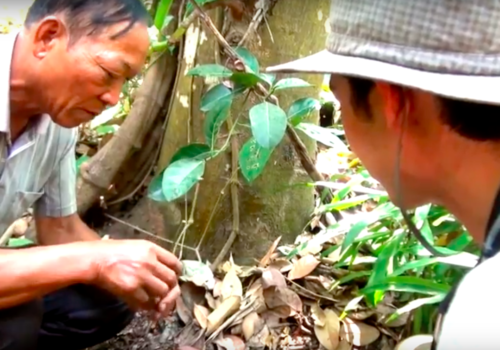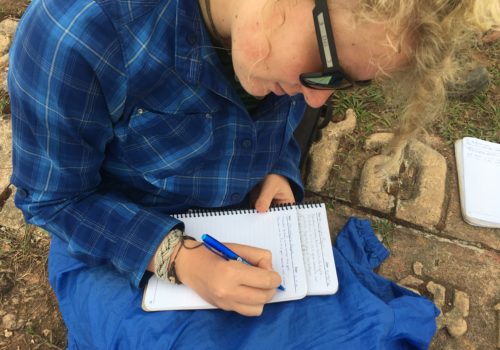A core part of an ISDSI semester is learning about leadership and judgment. We use hands-on training as well as the NOLS Leadership Skills to help students develop as competent and capable leaders.
Each semesters starts off with a retreat on the second weekend at the Mok Fa Waterfall, part of the Doi Suthep – Doi Pui National Park. The weekend is a great time for students and instructors to get to know each other, enjoy some time out in nature, and relax.
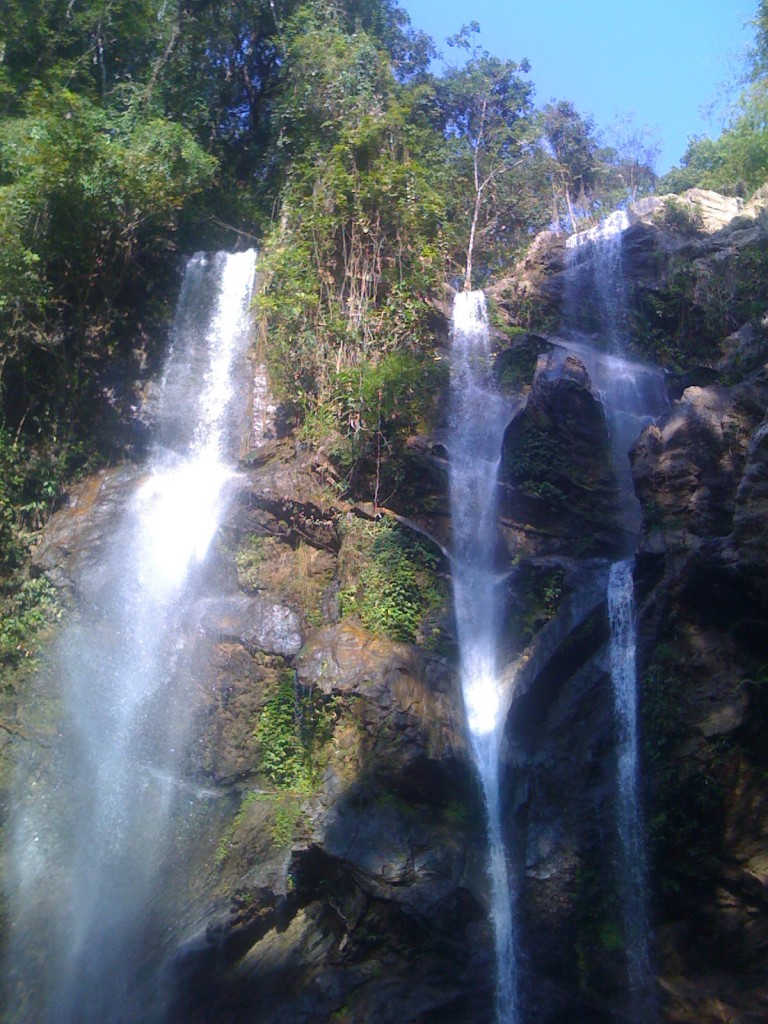
Mok Fa Waterfall.
We also use the weekend to begin the process of training students in risk management and judgment. Like any activity, studying on one’s home campus carries with it a set of risks and hazards. Learning and studying abroad has inherent risks associated with it as well, but the risks are different and students don’t have the “street smarts” they would in their home cultures. Because of that we do a number of things during the program, from training sessions to leader-of-the-day, to help students build their ability to make good decisions and lead in a challenging and different environment than their home cultures.
As a part of the weekend, we have modified a leadership tool used by Outward Bound (USA) that they use to train their instructors. We first learned about how to do this at a workshop “When Judgment Is Crucial: Outward Bound USA’s Instructor Judgment Training” at the Wilderness Risk Management Conference. The basic idea is simple — take a realistic scenario, and then work a group through the options and consequences of decisions.
We start the training session with a discussion of some basic principles of understanding risk, accidents, and how to pull apart a decision to understand its consequences.
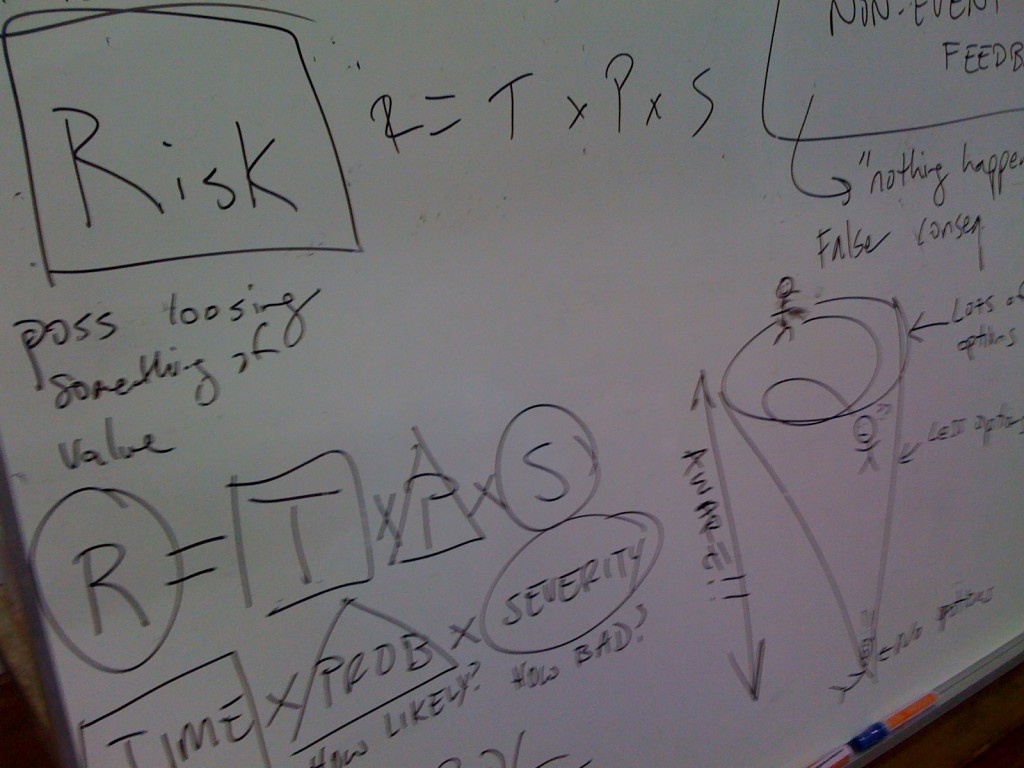
Risk, accidents and decision making.
Using these tools allow students to work through the scenario and begin applying a more sophisticated understanding of risk other than a “safe/unsafe” dichotomy.
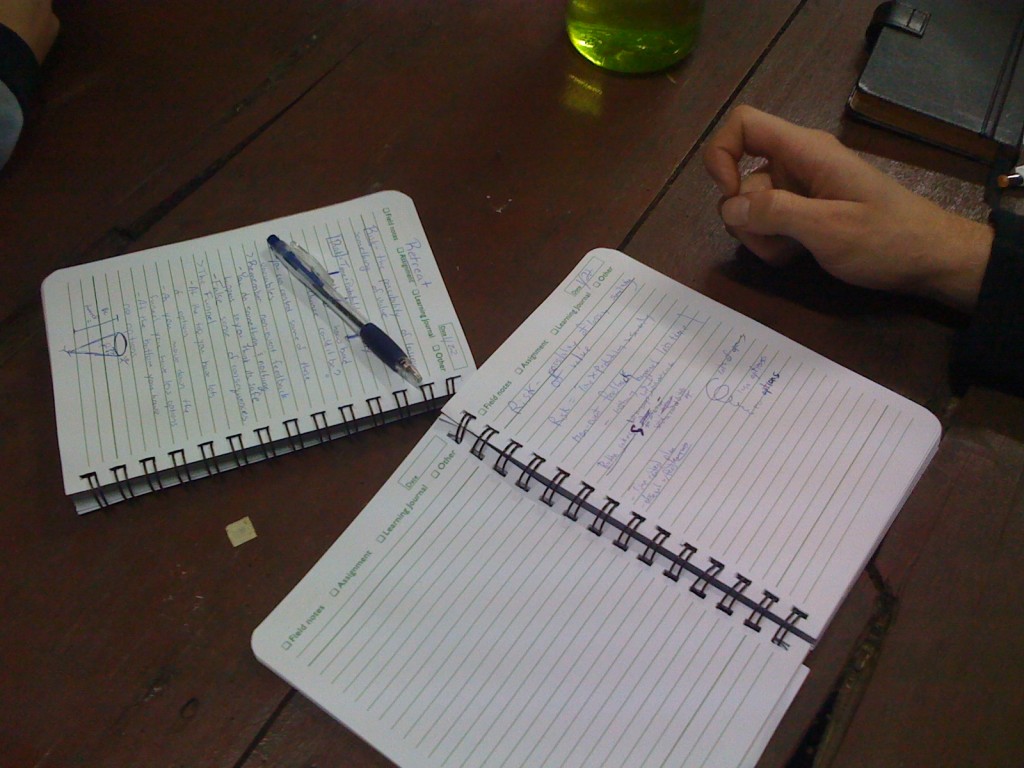
Notes -- students often end up referring back to these throughout the semester when they are in the position of being leaders-of-the-day.
The students break into groups, and we introduce the scenario — a group of students backpacking through the mountains in Northern Thailand from village to village. This involves understanding objectives hazards of weather and jungle travel, as well as cultural concerns and group dynamics.
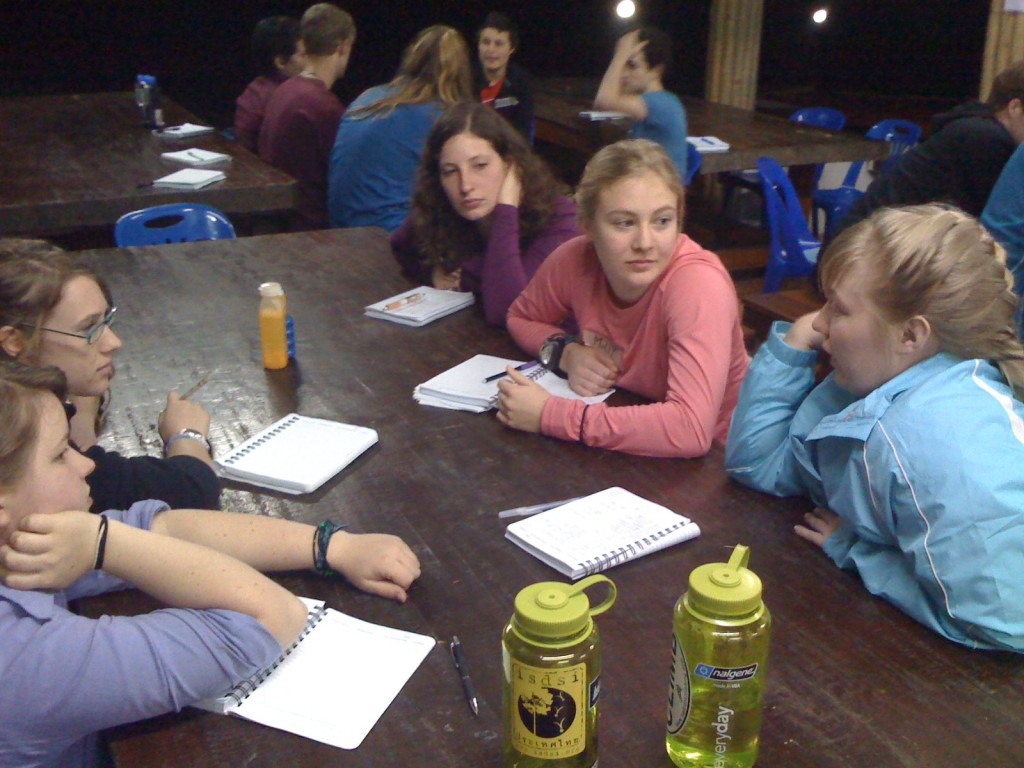
Talking over options.
The scenario is very close to the actual Expedition Field Courses they will experience, and is modeled to reflect some of the actual places and people they will meet during the Forests course.
At each point in the scenario where a decision needs to be made, the groups work through what they would do, and then share their decision with the larger group.
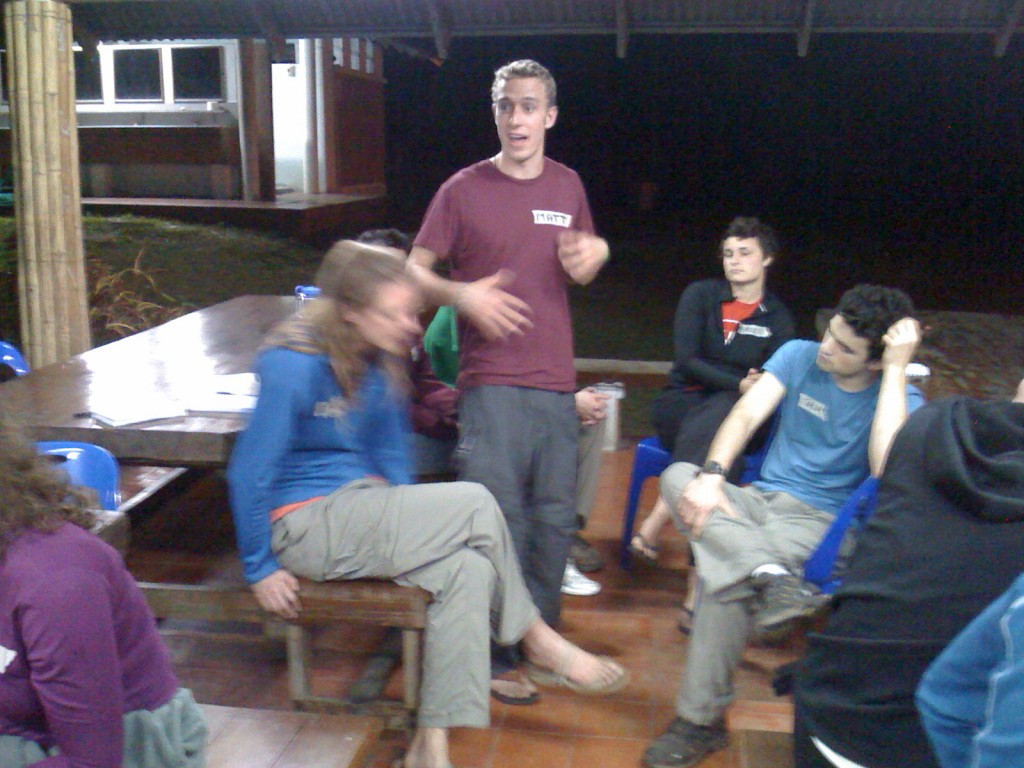
Matt sharing his group's thinking on their course of action.
Each group comes up with different solutions to the same set of problems. Do you stop your group on the trail? Turn back to the village?
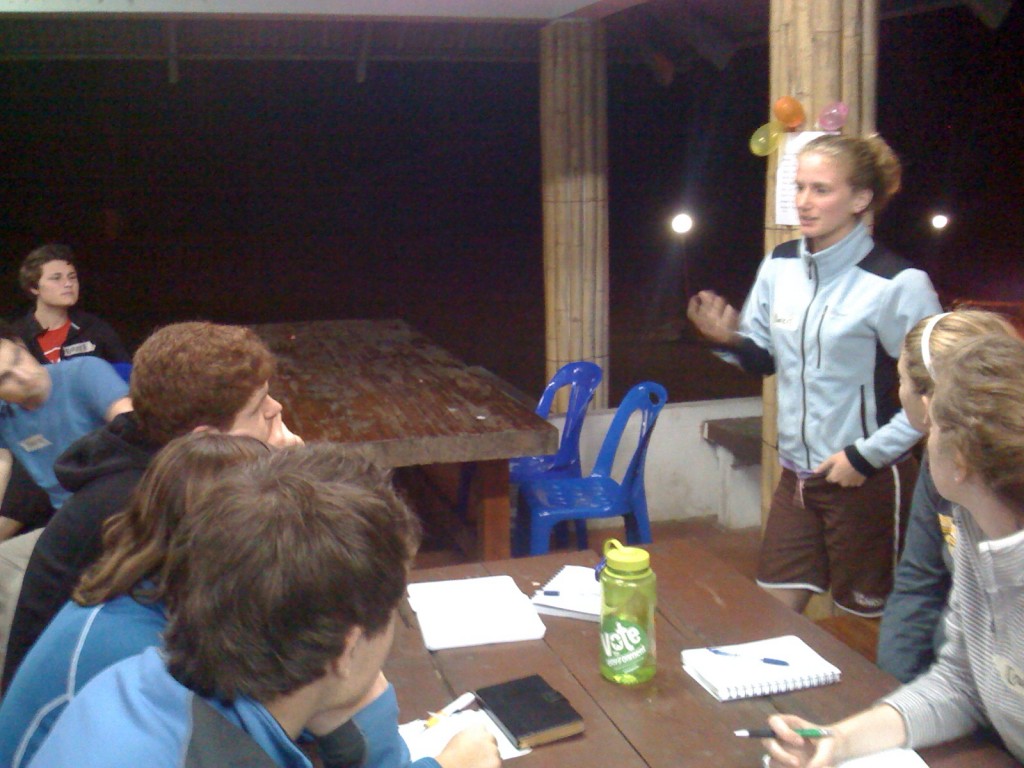
Karen explaining their decision and possible consequences.
The real-life decision modeling is a very powerful way to get students to understand that their decisions have consequences. It is impossible to eliminate all risk and hazards — but it is possible to manage those in a responsible way.

A key thing we learned ourselves on our Wilderness First Responder course.
After the scenario we debrief and reflect on what students have learned — what was surprising, what take away points they want to remember, and how to apply it.
The next day during the retreat we spend the morning putting this into action — first with a “Threats To Life” class on what to do in case of an emergency where someone has gotten hurt, and then with an accident scenario where they work in teams to carry a “patient” out of the jungle with an improvised litter. Aside from being a lot of fun, it brings home how decisions have consequences, and how to be thoughtful and aware in a new culture, environment, and learning context.
———–
For more on our approach, see “The Objective Hazards of Culture” online (as a PDF), as well as other papers on our Publications page.
Also see our Wilderness First Responder page, with explains a bit about our approach and the training required for ISDSI instructors.
